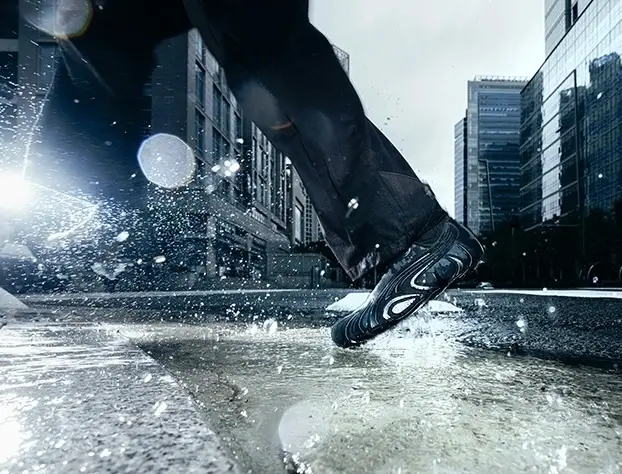In the ever-evolving world of shoe, few silhouettes manage to transcend generational shifts while retaining their core identity. The Onitsuka Tiger Mexico 66 is one of those rare breeds. And in its “Vintage White/Directoire Blue” colorway, this enduring classic merges its storied history with a contemporary streetwear edge—delivering nostalgia, utility, and subtle elegance in one streamlined package.
Originally released in 1966 and popularized globally during the 1968 Mexico City Olympics, the Mexico 66 was the first Onitsuka Tiger shoe to feature the brand’s now-iconic crossed stripes. It’s also the silhouette most closely associated with Bruce Lee and, later, Uma Thurman in Kill Bill. But beyond its cinematic legacy, the shoe represents a broader legacy of performance craftsmanship and minimalist Japanese design.
A Colorway Rooted in Timelessness
The “Vintage White/Directoire Blue” edition is one of the most recognizable versions of the Mexico 66. It pairs a creamy off-white leather base with bold blue tiger stripes and a bright red heel flap. The color story is inspired by Japan’s national athletic palette—an homage to its Olympic lineage and national pride. There’s something quietly confident about the combination: it’s sporty, precise, and unmistakably clean.
The shade of white leans more ivory than stark white, lending the sneaker a heritage vibe. This “vintage” tone gives the shoe a slightly aged appearance without seeming artificially distressed—perfect for wearers who appreciate a lived-in aesthetic that doesn’t try too hard. Meanwhile, the blue (Directoire Blue, as the name specifies) is vivid without being flashy, adding a punch of contrast without overpowering the shoe’s retro sensibility.
Craftsmanship and Materials
While often celebrated for its look, the Mexico 66 is also a masterclass in lightweight construction. The upper is built from a combination of premium leather and suede, creating a tactile contrast that elevates the otherwise minimal silhouette. The softness of the leather ensures it breaks in beautifully over time, molding to the wearer’s foot, while the suede overlays at the heel and toe provide reinforcement in high-wear areas.
The tongue is unpadded—true to the shoe’s vintage athletic roots—while the heel features an extended tab with the stitched Onitsuka Tiger logo, adding subtle structure and brand identity. The flat laces and minimalist eyelets contribute to its slim profile, perfect for low-cut denim, cropped trousers, or tailored track pants.
The sole unit remains unchanged from the original blueprint. It’s composed of a thin EVA midsole with a rubber outsole, designed for quickness, grip, and agility. While not built for long-distance running by modern standards, it’s an ideal everyday sneaker for urban movement. Think cafe hopping, gallery visits, or casual cycling—not marathon prep.
Fit and Feel
The Mexico 66 fits snug by design. It hugs the foot closely without squeezing, though many recommend sizing up a half size for comfort, especially for wider feet. Once broken in, the upper softens considerably, offering glove-like comfort with each wear. Because of its low-profile build, it sits discreetly under pants—offering just enough visual pop at the ankle without demanding attention.
The shoe is feather-light, making it a go-to for travelers, minimalists, and those who want a sneaker that doesn’t feel bulky or overbuilt. Its barely-there feel is precisely why it continues to appeal across fashion scenes, from Tokyo to Paris to Los Angeles.
Styling Versatility
What truly sets the Mexico 66 apart, especially in this vintage white/blue iteration, is its styling flexibility. It works in both high and low fashion contexts. Pair it with cropped black trousers, a tucked-in tee, and a lightweight trench for an understated Japanese-inspired street look. Or match it with shorts and a crewneck for a throwback ‘70s athletic aesthetic.
It also transitions effortlessly between seasonal wardrobes. In spring and summer, it thrives with linen and canvas. In fall, it adds a clean contrast beneath heavier fabrics like raw denim or wool. Even in winter, it can peek out from under cuffed trousers and long coats, offering a splash of color amid the grayscale palette of colder months.
Cultural Legacy
The Mexico 66 isn’t just a sneaker—it’s a symbol. Originally conceived as a performance shoe, it’s since evolved into a lifestyle staple worn by creatives, athletes, and stylists alike. Its crossover appeal speaks to its authenticity. Unlike hype-based releases or collaboration-heavy drops, this is a shoe that doesn’t need a co-sign to remain cool. It just is.
Bruce Lee wore a yellow/black version in Game of Death, which later inspired Tarantino’s Kill Bill costume design. That moment alone cemented the shoe as a cinematic and martial arts icon. But even off-screen, its popularity has been sustained by its simplicity, comfort, and low-key confidence.
In Japan, it’s a cornerstone of shibui fashion—a term describing understated elegance and timeless cool. In Western markets, it’s a favorite of design-conscious consumers who value heritage over trend-chasing. Its wearers aren’t looking to stand out—they just know what works.
A Design That Endures
In an era dominated by maximalist footwear—thick soles, layered panels, aggressive branding—the Mexico 66 remains refreshingly restrained. It’s the opposite of loud. And that’s exactly why it resonates. In 2025, its appeal is stronger than ever, especially as global fashion continues to lean into nostalgia, subtlety, and archival silhouettes.
The “Vintage White/Directoire Blue” is especially powerful because it honors the original 1960s colorway. There’s no reinvention here. No gimmick. Just purity of design and execution. That kind of confidence in heritage is rare, and it shows.
Impression
The Onitsuka Tiger Mexico 66 in “Vintage White/Directoire Blue” is a shoe that lives between eras. It’s rooted in Olympic legacy, martial arts history, and Japanese design philosophy—but it walks confidently through modern fashion’s corridors. It doesn’t chase trends, and it doesn’t need to shout. It earns its place through quiet precision, cultural substance, and enduring beauty.
No comments yet.









